Castagnaccio is one of the most traditional Tuscan desserts, a rustic cake made with chestnut flour, raisins, pine nuts, walnuts, and a touch of rosemary. Prepared only with water and extra virgin olive oil, it contains no eggs, no butter, and no yeast, which makes it very different from the soft, fluffy cakes we are used to today.
The result is a moist, dense, and naturally sweet cake, where the flavor of chestnuts is the true star. In fact, the original Tuscan recipe did not include sugar at all, so that you could fully enjoy the natural sweetness of chestnut flour. Over time, many families began to add just a little sugar, making the taste more delicate and suitable for everyone.
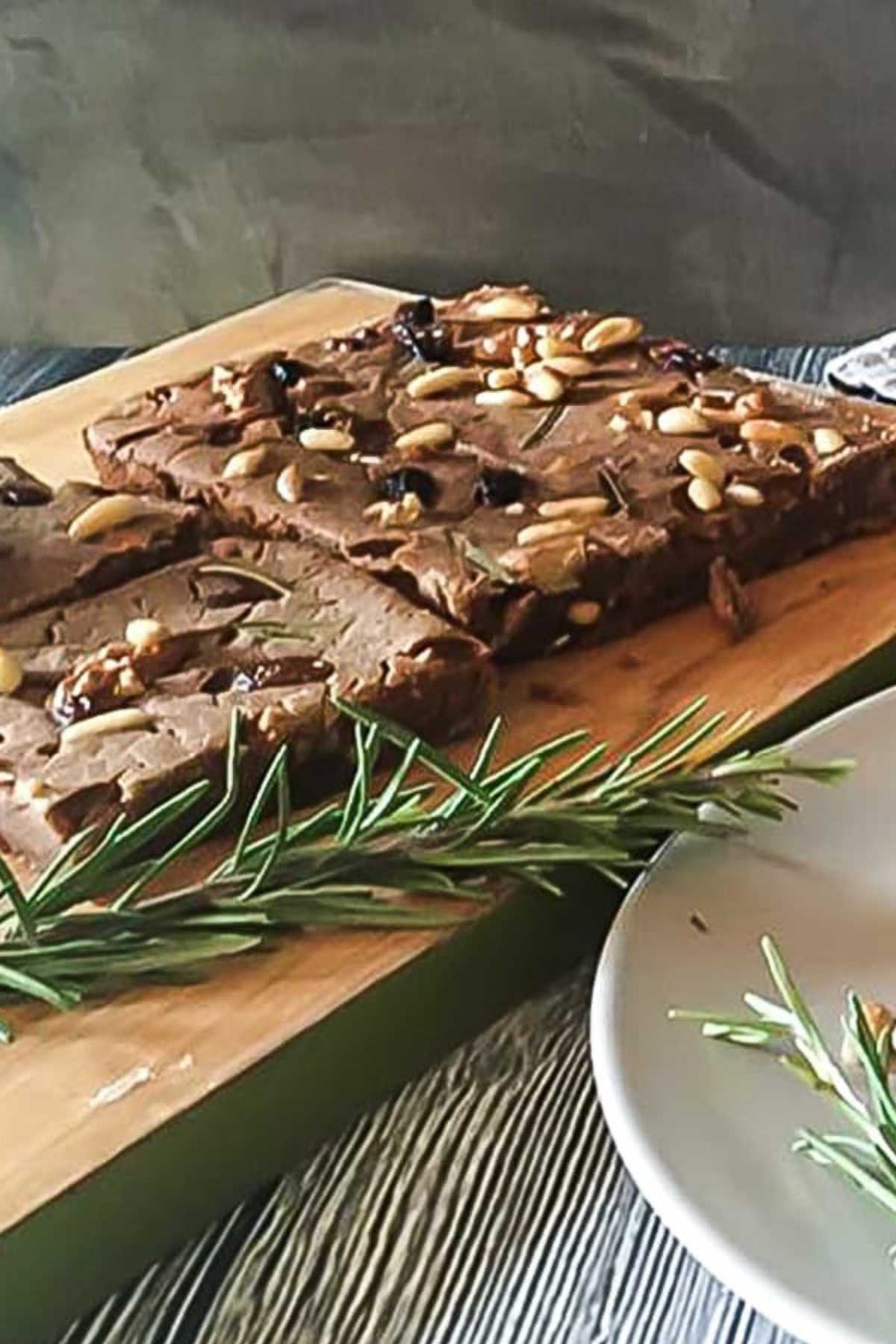
Castagnaccio has ancient roots: it was already known in Tuscany in the 1500s, when it was considered a humble peasant dish. By the 19th century, the recipe had spread to other regions of northern Italy, such as Piedmont, Lombardy, and Veneto, where chestnuts were once called “the bread of the poor.” With the addition of raisins and pine nuts, the cake became richer and more widely appreciated.
Today Castagnaccio is a beloved autumn and winter dessert, perfect to enjoy with a glass of vin santo or a cup of coffee, and a wonderful way to savor the authentic flavors of Italian tradition.
Jump to:
Ingredients
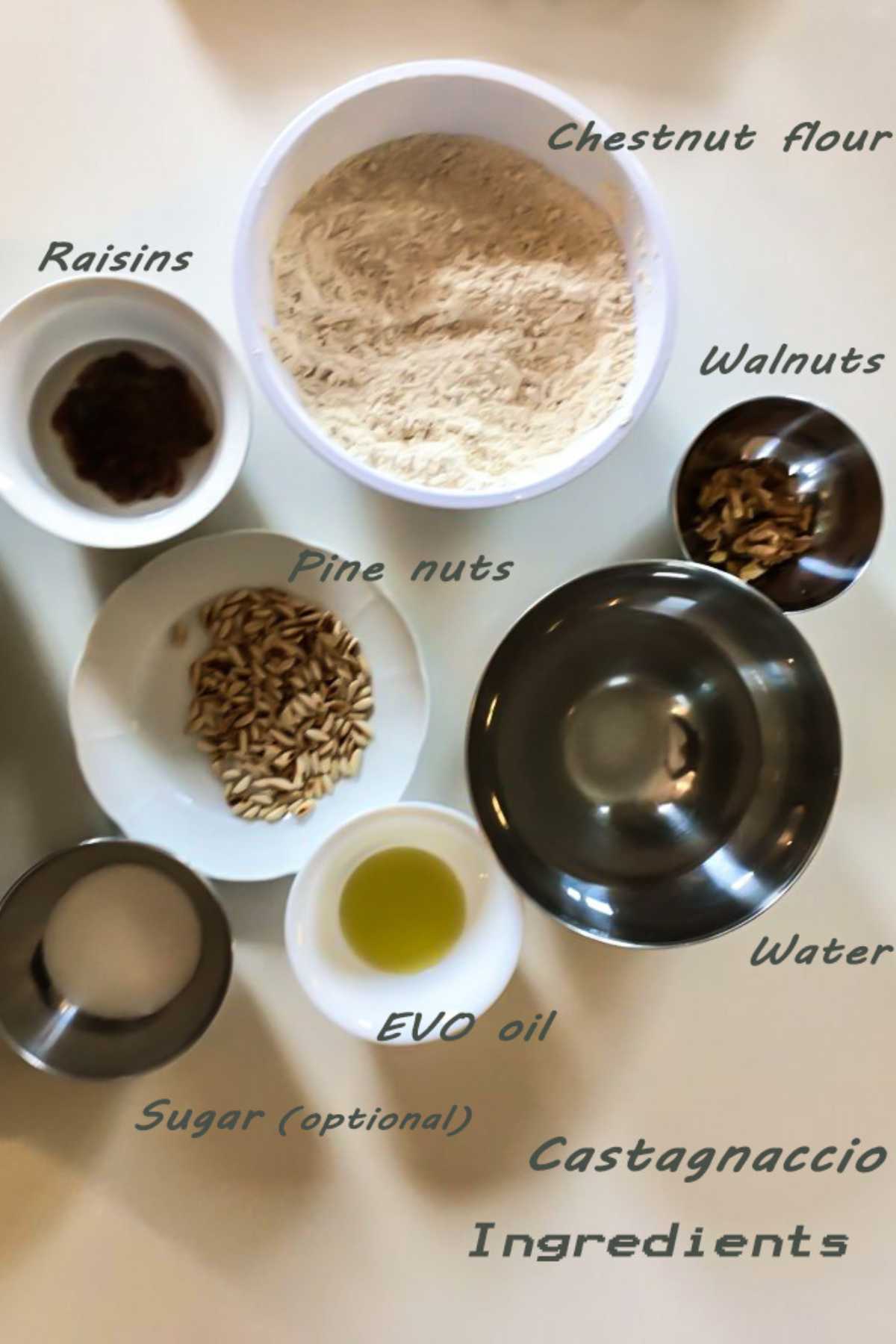
Prep Time: 20 Min | Cook Time: 35 Min | Servings: 6-8
Doses for 30 x 20 centimeter (12 x 8 inch) baking pan
- 300 g (2 cups) of chestnut flour. Try this Italian Chestnuts Flour by Giannetti Artisans.
- 380 ml (1 ½ cups) of cold water
- 4 tablespoons of granulated sugar (optional)
- 2 tablespoons of extra virgin olive oil
- 2 tablespoons of raisins
- 2 tablespoons of pine nuts
- 2 tablespoons of walnut kernels
- 2 sprigs of rosemary
- a pinch of salt
Instructions

Step 1) - Start making Castagnaccio recipe by soaking 2 tablespoons of raisins in cold water for about 10 minutes. Meanwhile toast 2 tablespoons of pine nuts in a non-stick frying pan. Then, in a bowl sift 300 g (2 cups) of chestnut flour and add a pinch of salt. Now add 4 tablespoons of granulated sugar (optional), if you want this dessert to be particularly sweet. Remember that chestnut flour already has a slightly sweet taste so the choice is entirely personal.

Step 2) - Add 2 tablespoons of extra virgin olive oil and 380 ml (1 ½ cups) of cold water. You have to pour the water a little at a time. Keep stirring with a hand whisk to avoid the formation of lumps. You will have a smooth but not excessively liquid batter.

Step 3) - Now add 1 tablespoon of raisins, 1 tablespoon of the toasted pine nuts, 1 tablespoons of walnut kernels and then mix all together. Preheat the oven to 180ºC (350ºF). Pour the batter into a 30 x 20 centimeter (12 x 8 inch) baking dish previously greased with a bit of oil. Spread evenly on top the remaining raisins, walnuts and pine nuts. Finish with some rosemary needles and a drizzle of olive oil.

Step 4) - Bake for 35 minutes, until you see small cracks appear on the surface. Take the Castagnaccio out of the oven and let it cool in the pan before serving.
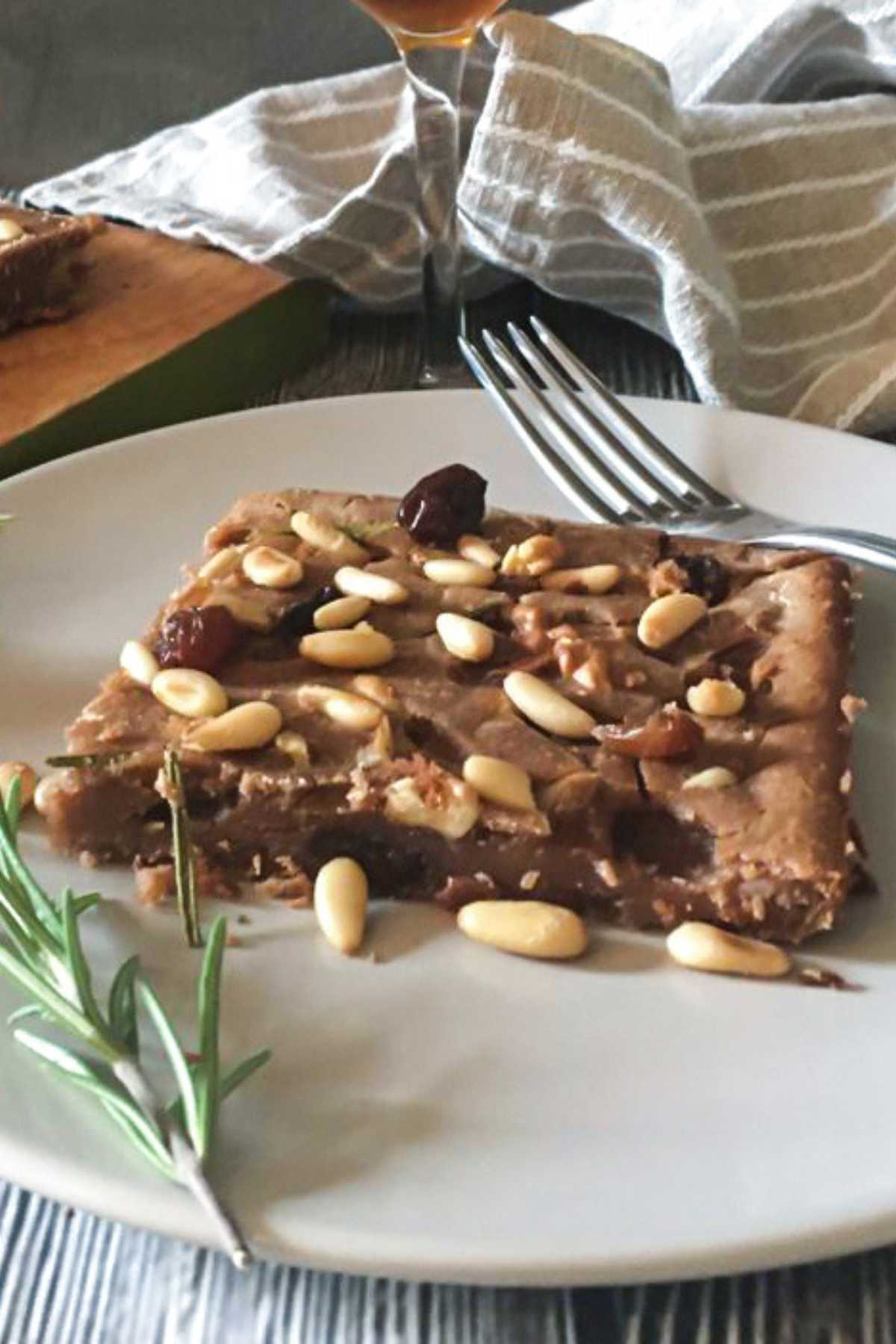
How to Serve
Castagnaccio is best served with ricotta, chestnut honey or sweet wines such as Vin Santo.
Storage
You can keep the Tuscan chestnut cake covered with a cloth out of the fridge for 3-4 days at most. We don't recommend freezing because this type of cake would become rubbery.
Tips
Like all dishes of Italian tradition, even Castagnaccio has its secrets for the good outcome of the recipe.
- BAKING PAN: You have to use a low baking pan (maximum 2 cm high/0,8 inch), because according to tradition the castagnaccio cannot be higher than 1 cm (o.4 inch).
- CHESTNUT FLOUR: Chestnut flour must be of excellent quality and very fine so that it can release all its sweetness.
- SUGAR: The authentic Tuscan recipe of Castagnaccio does not want sugar. We put it in the ingredients because we believe it depends on tastes, more or less sweetness in desserts.
- BATTER: prepare the batter by hand, never in the electric mixer. Only in this way will you get the right consistency and you can adjust water, if necessary.
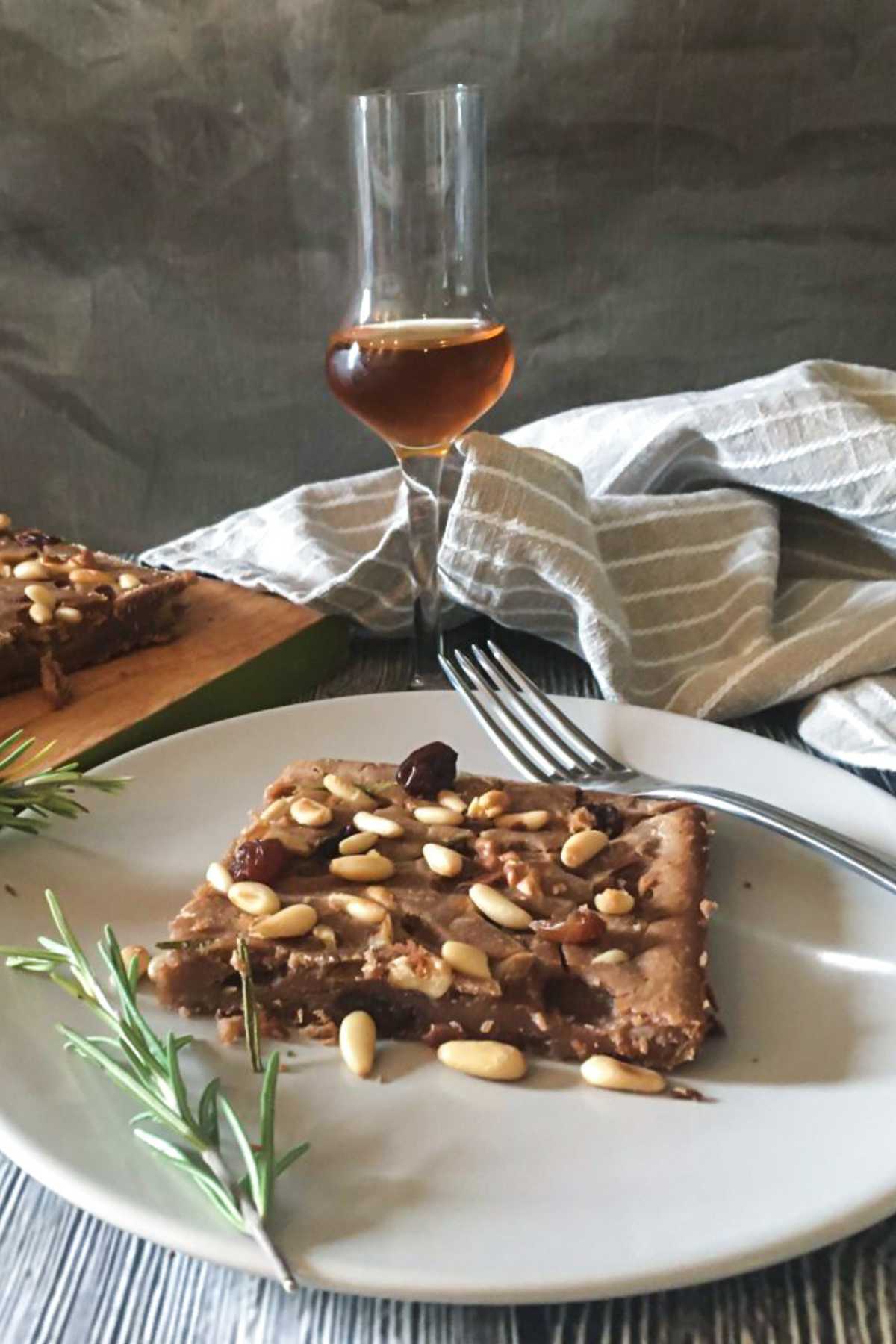
Variations
- PIEDMONT VARIATION: There is a chestnut flour cake, especially in Piedmont, that is higher, softer and richer than the traditional one. It's made with the addition of apples, milk and honey. The result is a cake more moist and fragrant but it's a little more elaborate recipe.
- AMARETTI AND APPLES: There is even another variation, always in Piedmont, where you have to add to the batter Amaretti crumble and apples.
- RICOTTA: Then there is the one with cow's milk ricotta. Ricotta is maybe the cheese that goes best with castagnaccio. It's often used as an accompaniment to a slice of classic chestnut cake. Nothing prevents it from being added to the batter. Usually this variant is flavored with a small glass of aniseed liqueur or (even more delicious version) the addition of chocolate drops.
More Italian Recipes with Chestnuts
Discover how chestnuts are used in both sweet and savory Italian dishes:
- Necci Recipe – Thin pancakes made with chestnut flour, traditionally filled with ricotta or chocolate. A rustic treat from Tuscany.
- Chestnut Gelato - Creamy and rich, this gelato highlights the sweet, nutty flavor of chestnuts in a refreshing dessert.
- Italian Speck Wrapped Chestnuts – A quick and elegant appetizer where smoky speck balances the natural sweetness of chestnuts.
- Roast Pork with Chestnuts – A hearty main course, perfect for autumn and winter, where tender pork pairs beautifully with roasted chestnuts.
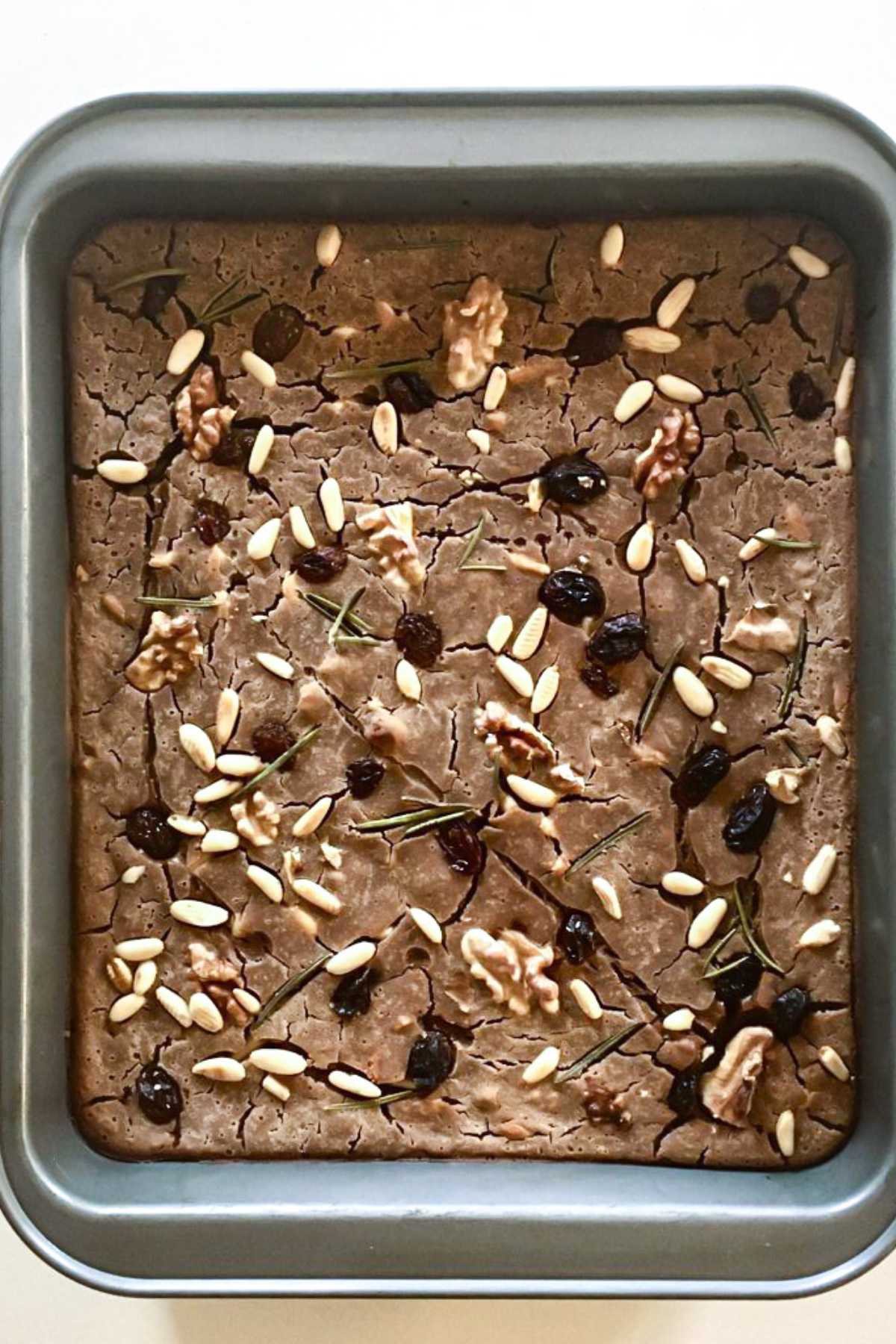
History and Curiosities
This rustic, semi-sweet cake has been known since the sixteenth century. It was once called "bread of wood" or "bread of the poor" because of the simplicity of its ingredients. But the names it takes in the different areas of Italy are really many: ghirighio, pattona, toppone, baldino...
In the beginning, Castagnaccio was a food mainly consumed by the poor peasants, obtained from the chestnut tree, very common in the countryside.
According to some historical documents, it seems that the creator of this dessert made with chestnut flour was Pilade da Lucca, who is mentioned in the "Commentario delle più notabili et mostruose cose d'Italia et altri luoghi" ("Commentary on the most remarkable and monstrous things of Italy and other places") written by Ortensio Orlando and published in Venice in 1553.
Castagnaccio began to be exported to the rest of Italy in the 16th century, and from then on it was enriched with raisins, pine nuts and walnuts.
Finally, the Castagnaccio recipe has a curious implication: it was said that the rosemary leaves used in the chestnut cake were a love filter: the boy who ate the cake offered by a girl would fall in love with her and marry her. So eat, enjoy and... good luck!

Recipe Card

Castagnaccio (Italian Chestnut Flour Cake)
Ingredients
- 300 g chestnut flour - 2 cups
- 380 ml cold water - 1 ½ cups
- 4 tablespoons granulated sugar - optional
- 2 tablespoons extra virgin olive oil
- 2 tablespoons raisins
- 2 tablespoons pine nuts
- 2 tablespoons walnut kernels
- 2 sprigs rosemary
- 1 pinch salt
Instructions
- Start making Castagnaccio recipe by soaking 2 tablespoons of raisins in cold water for about 10 minutes.
- Meanwhile toast 2 tablespoons of pine nuts in a non-stick frying pan.
- In a bowl sift 300 g (2 cups) of chestnut flour and add a pinch of salt.
- Add 4 tablespoons of granulated sugar (optional), if you want this dessert to be particularly sweet. Remember that chestnut flour already has a slightly sweet taste so the choice is entirely personal.
- Add 2 tablespoons of extra virgin olive oil and 380 ml (1 ½ cups) of cold water. You have to pour the water a little at a time. Keep stirring with a hand whisk to avoid the formation of lumps. You will have a smooth but not excessively liquid batter.
- Add 1 tablespoon of raisins, 1 tablespoon of the toasted pine nuts, 1 tablespoons of walnut kernels and then mix all together.
- Preheat the oven to 180ºC (350ºF). Pour the batter into a 30 x 20 centimeter (12 x 8 inch) baking dish previously greased with a bit of oil.
- Spread evenly on top the remaining raisins, walnuts and pine nuts. Finish with some rosemary needles and a drizzle of olive oil.
- Bake for 35 minutes, until you see small cracks appear on the surface. Take the Castagnaccio out of the oven and let it cool in the pan before serving.

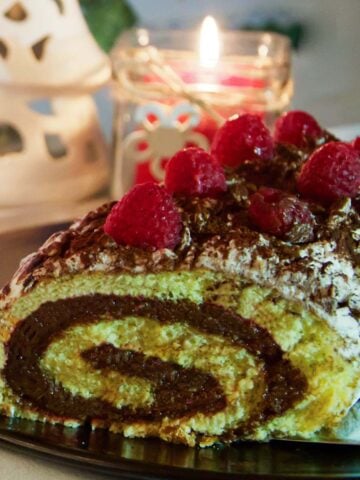
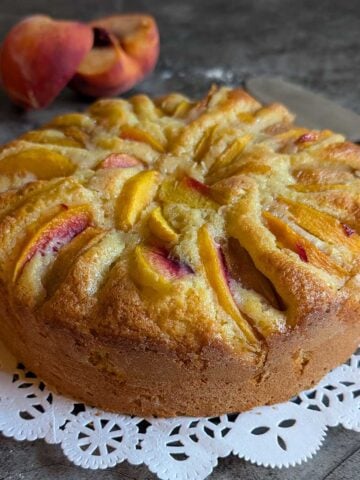
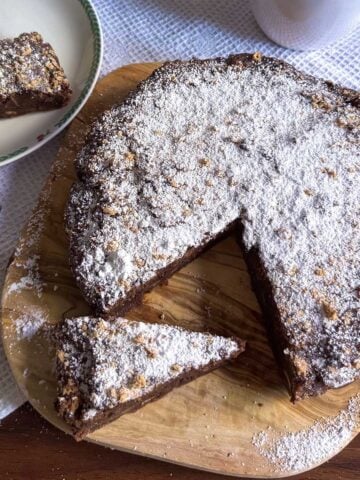

Josi says
This is the third time I'm making it. Only use 2.5 tablespoons of sugar. I added 2 Tabs of flour, too and mixed in about 1/3 cup
milk in the water. It's a little richer. THANK YOU!
Edmond says
Excellent recipe. I had brought chestnut flour from Italy and it came out delicious. Could not find pine nuts, which I replaced with shredded almonds.
There are many recipes in Italian and English, but most don't give the proportions of flour to water. This one saved the day!